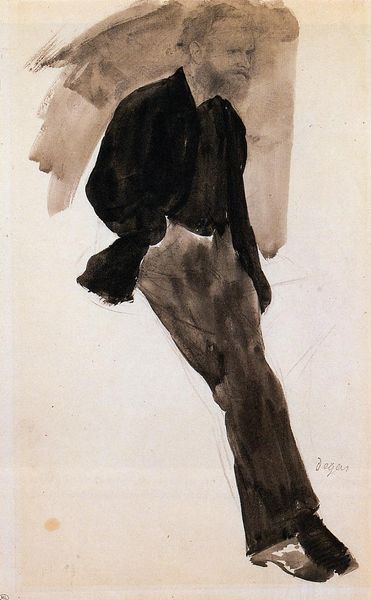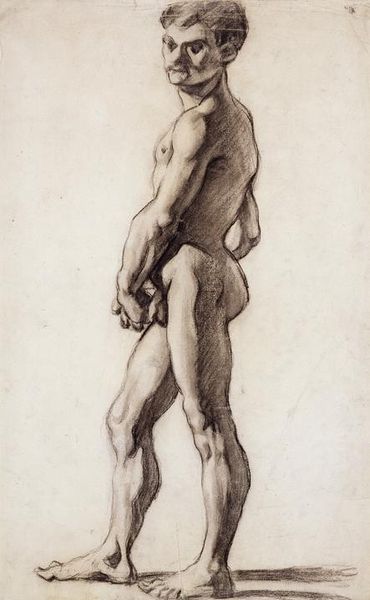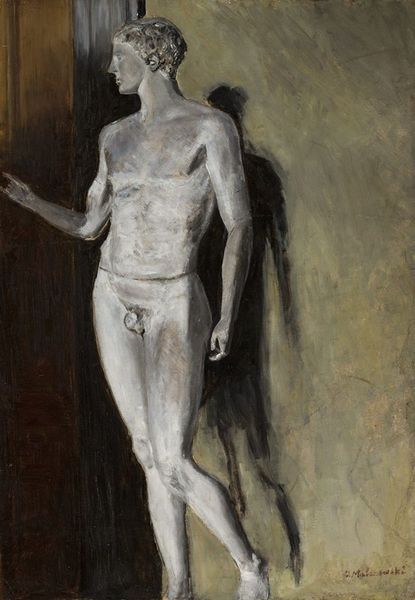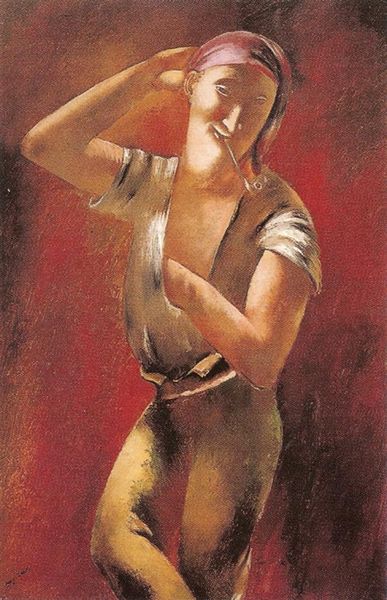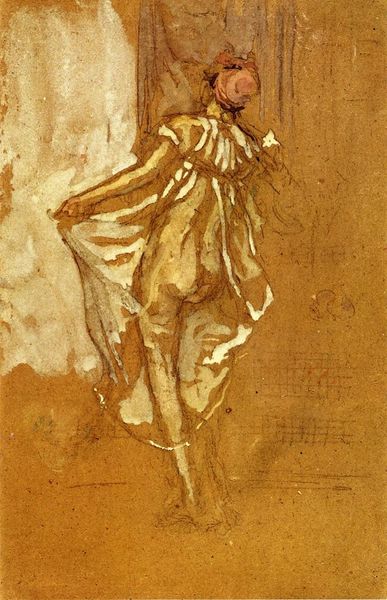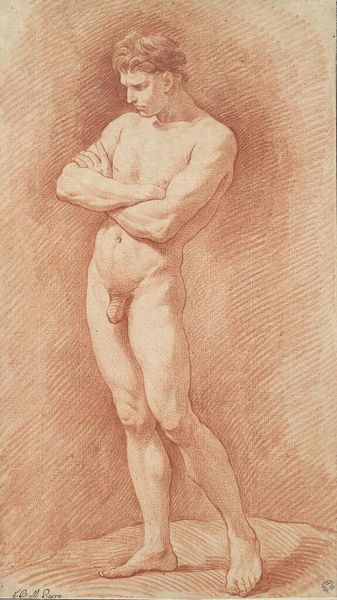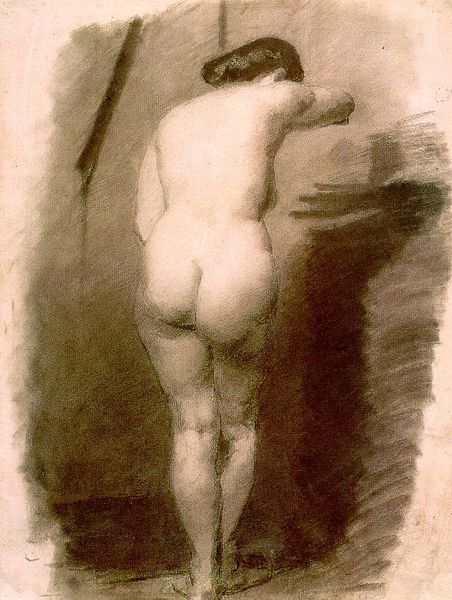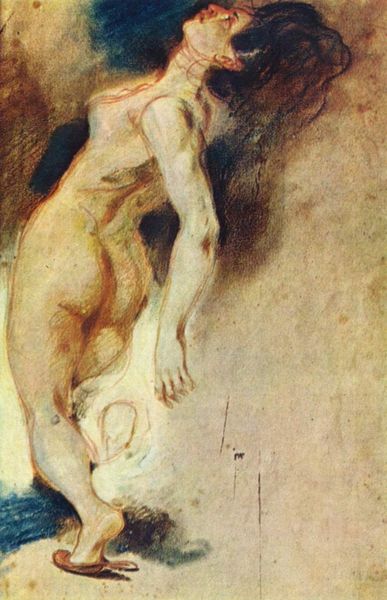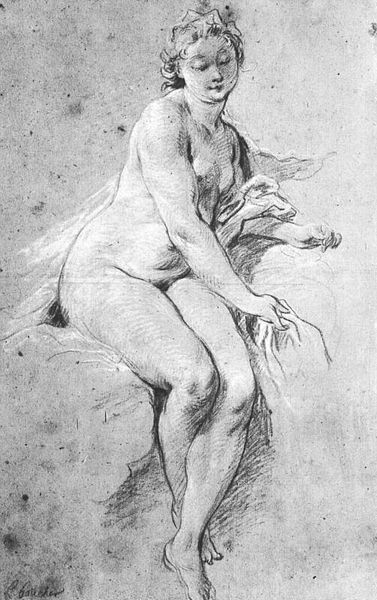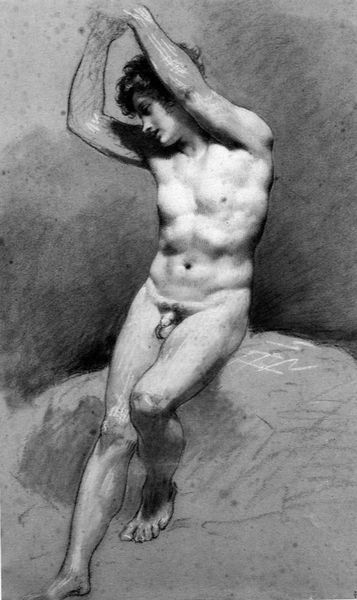
drawing, pencil, charcoal
#
drawing
#
impressionism
#
charcoal drawing
#
figuration
#
charcoal art
#
female-nude
#
pencil
#
charcoal
#
nude
Copyright: Public domain
Curator: I see vulnerability and maybe a slight awkwardness in the pose. The dark skirt contrasting with her pale torso… it’s striking. Editor: Let's take a closer look at Degas' "Standing Female Figure with Bared Torso," created around 1868. It's primarily a charcoal and pencil drawing currently held at the Kunstmuseum Basel. The composition is fairly simple: a standing nude set against a burnt sienna background. Curator: Simple, yet that simplicity allows the gaze to linger on the details, doesn't it? The materials lend themselves to a rawness, and given Degas’s documented interest in the female form within societal expectations, one has to wonder about the position of the model. There is an argument to be made that the act of removing garments removes the veneer society expects a woman to present, it creates a scenario for potential study into their true state, or feeling. What societal forces acted on this women? What would it mean for her to make such a living at that time? Editor: Absolutely. Looking closely at the materials themselves, one can see Degas uses charcoal to great effect. The subtle blending, almost smudging in places, creates depth but also a sense of transience. This wasn’t meant to be a polished, idealized representation. We can see process, labour. The paper grain itself becomes a texture, contributing to the image. What sort of life do you imagine this woman was living when posing for the drawing? Curator: Right. It pushes beyond mere representation. Degas was a master of capturing not just form, but movement and momentary poses, and in many instances was even a great commentator on socioeconomics. Here, it’s the angle of her body that suggests dynamism as opposed to perfect stasis. Considering his background within a burgeoning class system, he would of understood the weight of manual labour, perhaps making some statement against the societal implications that come with such disparity? Is there the question of body-image present also? Editor: Yes, and while the Impressionists are often remembered for their paintings, Degas' mastery of drawing and his experiments with media – like charcoal on textured paper – shouldn't be overlooked when looking at labor, and the commodification of image and form, in particular that of female forms at that time. It becomes apparent how the material contributes to that story. Curator: Exactly. In examining Degas' "Standing Female Figure" through a contemporary lens, we can gain valuable insights into historical power dynamics and labor practices but ultimately how class disparity and capitalism shape perception. Editor: For me, it becomes an examination of Degas’ practice itself. How his labor with these materials engages with—and potentially complicates—the narratives he seems to be building in the artwork.
Comments
No comments
Be the first to comment and join the conversation on the ultimate creative platform.

